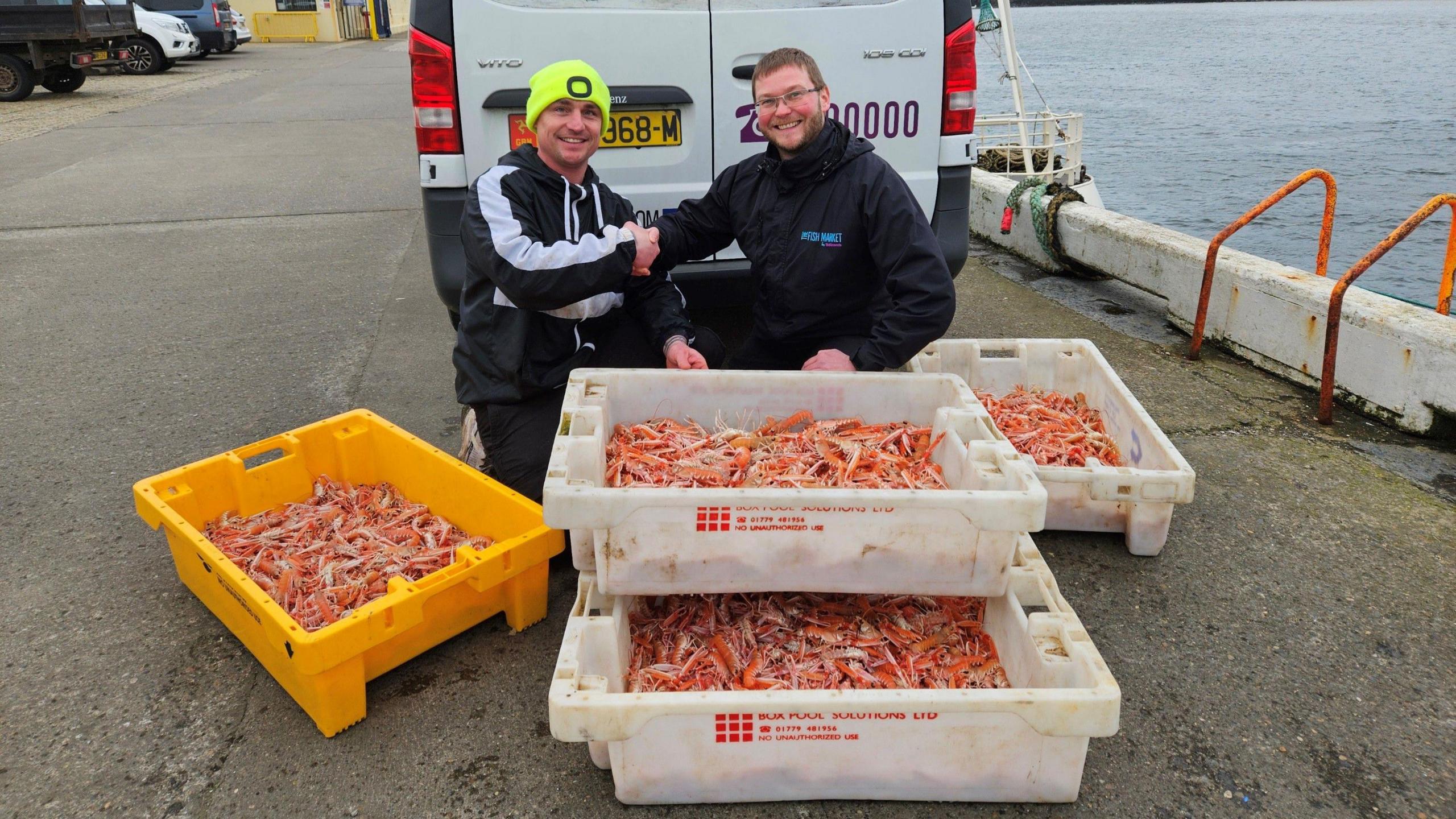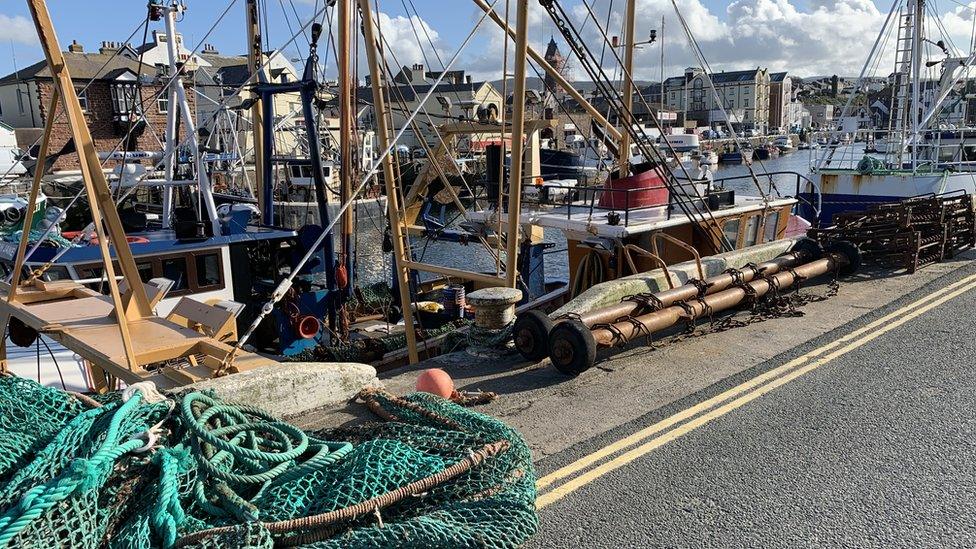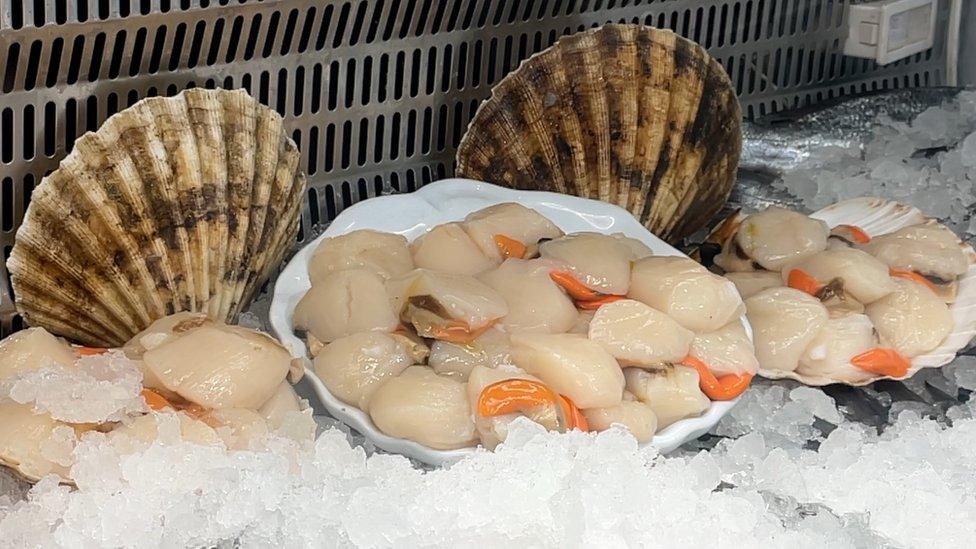Ban on bottom trawling at three Manx fishing sites

The new measures will allow for the continued development of the island's new langoustine fishery
- Published
A ban on bottom trawling at three Manx fishing sites is a "significant step forward" for the local fishing industry and food policies, the government's sea fisheries manager has said.
Jack Emmerson said the new measures off the west of the island from 8 April would allow for the development of a new and sustainable langoustine fishery using low impact methods.
That follows the awarding of 100 tonne quota for langoustines to the island by the UK.
The Department for Environment, Food and Agriculture's ban on bottom trawling in the area will remain in place until December 2026, when research into blue carbon and seabed habitats has been complete and a review of the trial fishery will start.
The measures will stop the areas within the western Irish Sea mud-belt being disturbed by fishermen towing nets to catch fish and other marine species living close to the seabed.

Local skipper John Henley (left) recently landed a catch langoustines
Mr Emmerson said the measures "strike a balance between sustainable local food production, environmental protection and the need for greater research into the role these marine habitats have in mitigating climate change".
Using creels, which are traps set on the seabed that use bait to encourage species to enter the basket, had "significantly less impact on the seabed compared to other methods, and virtually no bycatch", he added.
David Beard from the Manx Fish Producers Organisation said that the first catches from the newly established creel fishery meant the island was "once again at the forefront of sustainable fisheries management".
Why not follow BBC Isle of Man on Facebook, external and X, external? You can also send story ideas to IsleofMan@bbc.co.uk
Related topics
More like this
- Published4 December 2023

- Published4 July 2023

- Published12 January 2023

- Published2 November 2022
